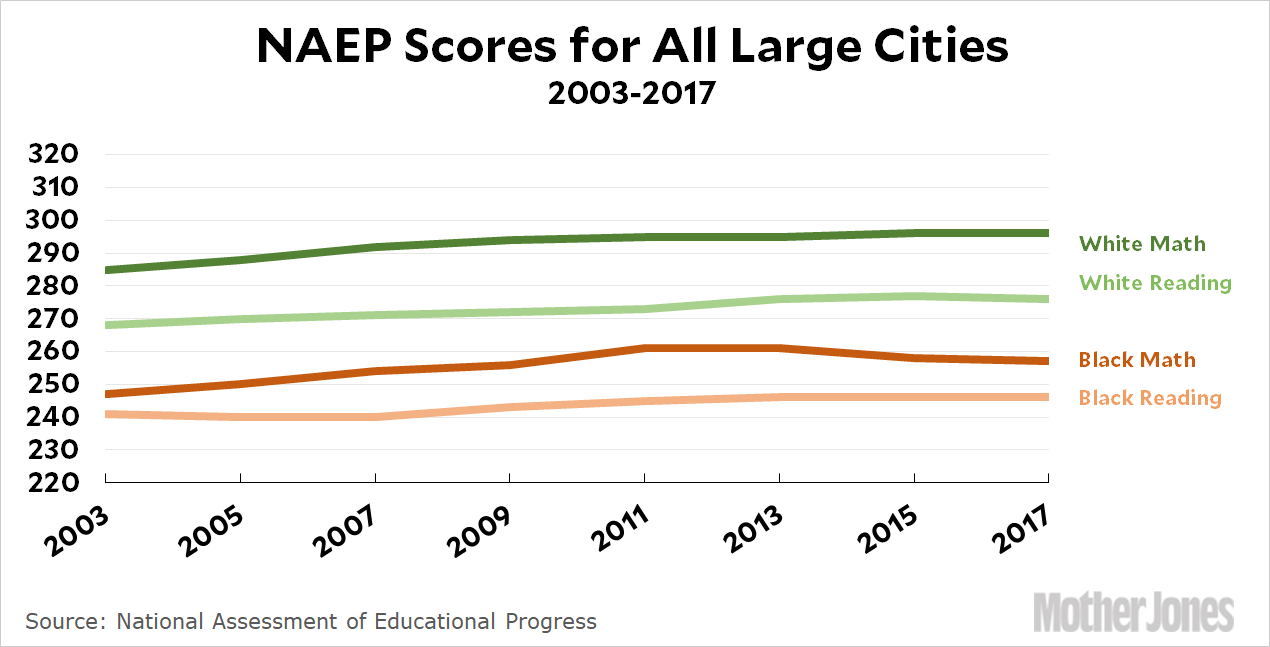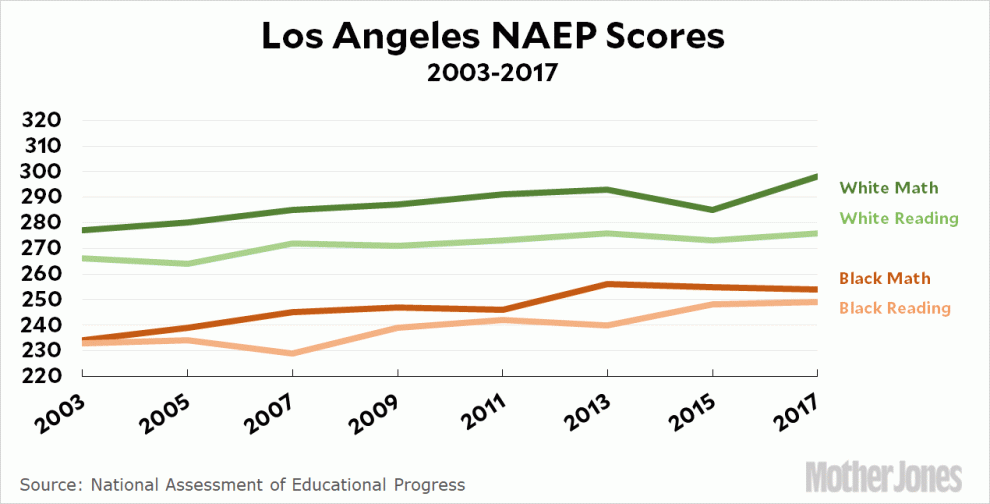
Bob Somerby has been highlighting education this week, and his main beef is with an article in the New York Times that says Chicago students have “learned the most” of any big-city school district. This is based on a study by Sean Reardon that shows Chicago students making great progress between third and eighth grades. I wrote about it a few months ago.
But the data in that study is for all students. What happens if you disaggregate white and black scores? You can guess how grim it looks. It also begs to be shown in chart form, which turned out to be far harder than I expected. I wanted to look at NAEP scores for a few big cities, and I ended up copying each year’s worth of data into a spreadsheet by hand. As bad as that was, when I was finished it really didn’t look like there was any great way to display the data. Eventually I decided to choose five cities and show each of them separately. Here they are for 8th grade students:
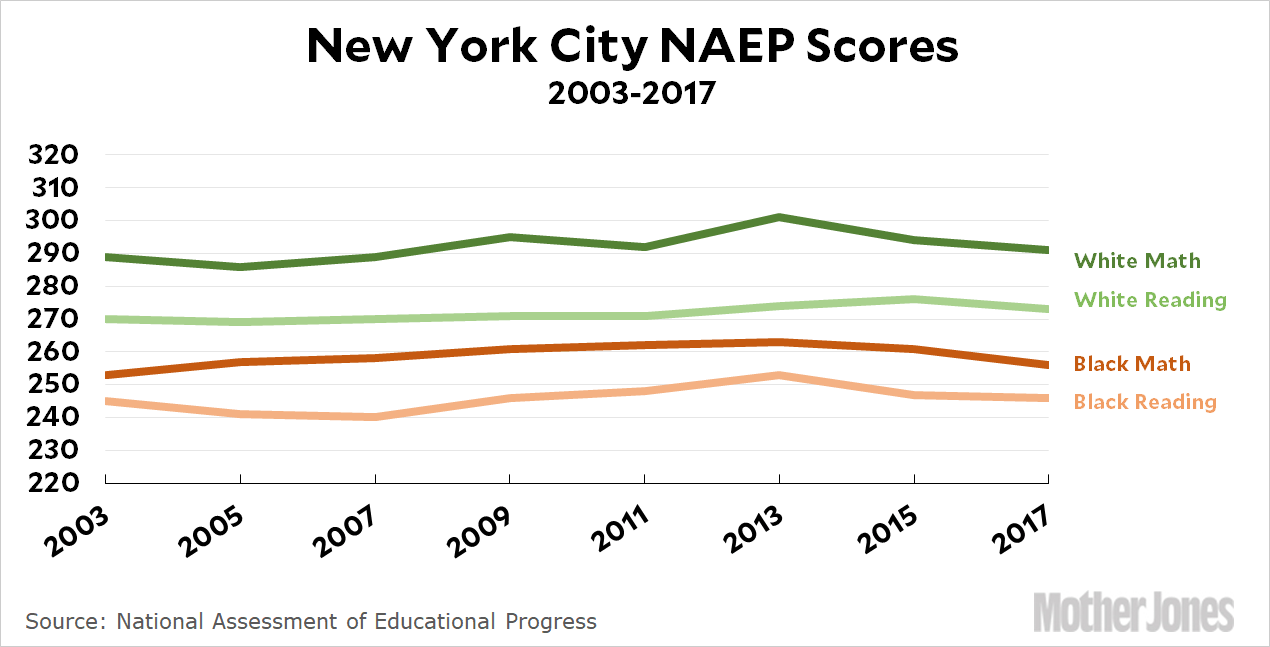
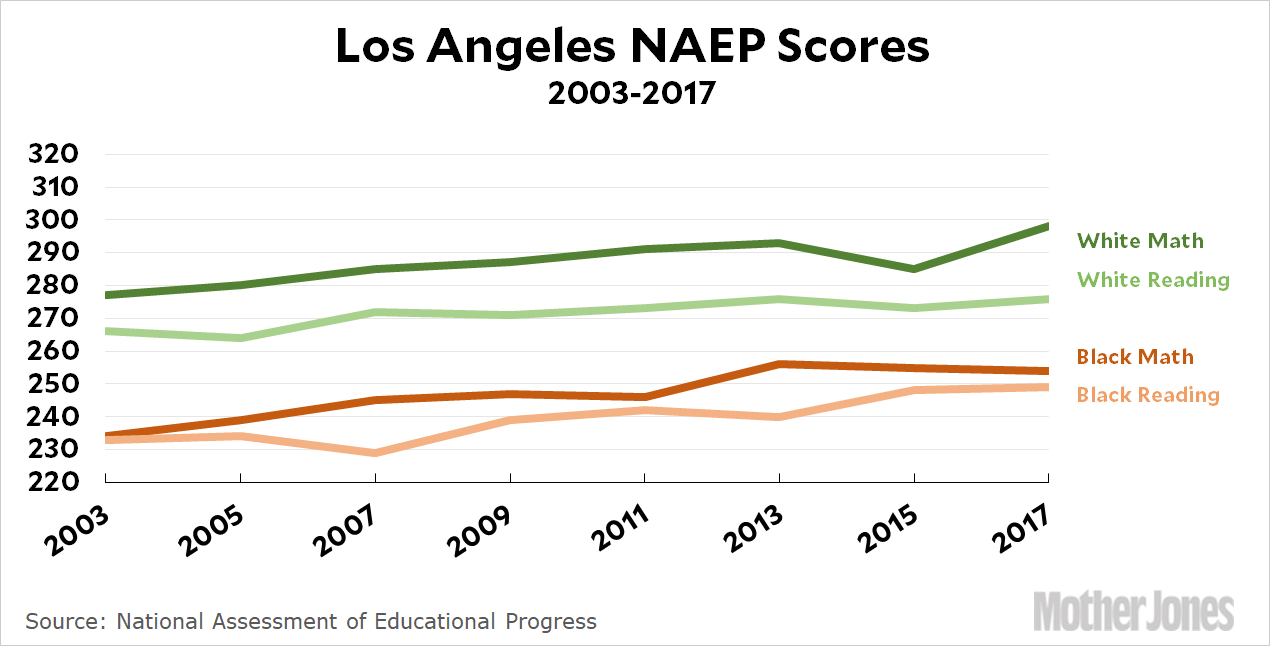


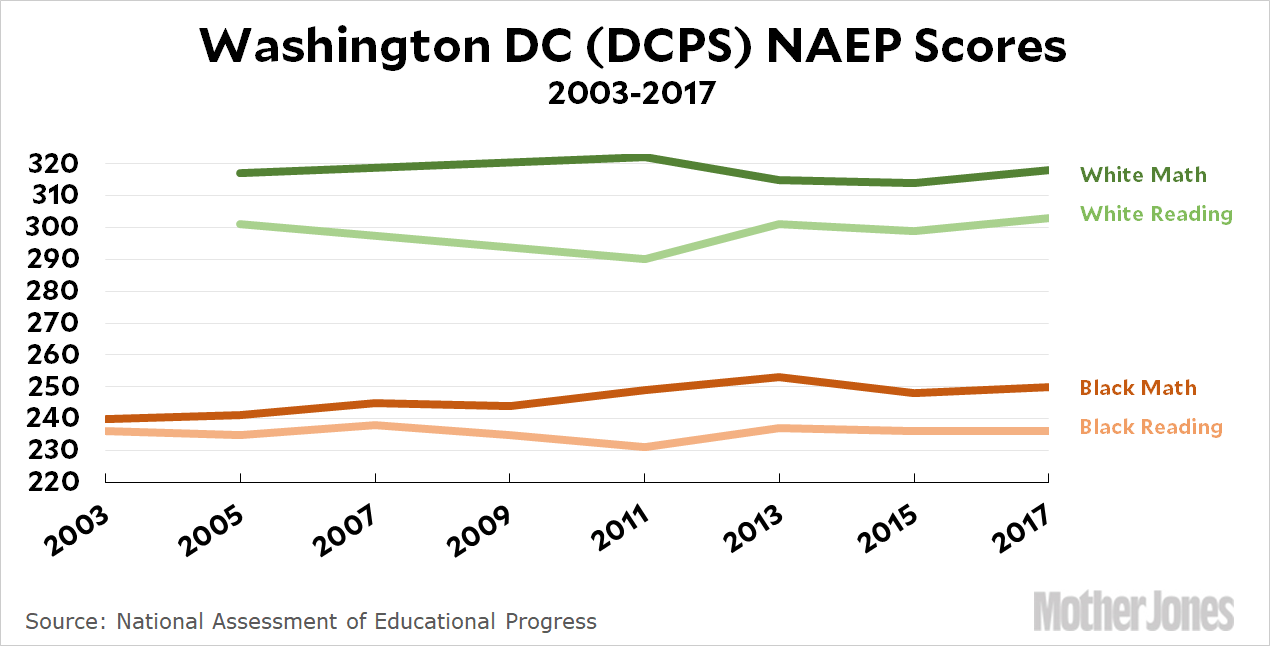
Obviously the main thing that jumps out at you is the huge gap between black and white students. But as big as the gaps are, some are way bigger than others. They range from about 30 points (three grade levels) in New York to an astonishing 60+ points (six grade levels) in Washington DC. This might be because New York does a more equitable job of educating its kids than DC, or it may be because the average income difference between whites and blacks is smaller than in DC. It’s not possible to jump to any conclusions based solely on this data.
Progress over time also varies a lot. New York has made zero progress in both reading and math for both blacks and whites. Ditto for Washington DC, with the exception of some progress in math for black kids. Chicago, on the other hand, really has done well: white kids have improved by 30 points in math and 18 in reading. Black kids have improved by 14 points in math and 5 in reading.
But it’s Los Angeles that’s shown the biggest progress across the board. White kids have improved by 21 points in math and 10 in reading. Black kids have improved by 20 points in math and 16 in reading. That’s the best progress among black kids among all five cities, and close to the best progress for white kids too.
Now, this is a very different thing from Reardon’s study. He was looking at progress from third grade to eighth. I’m showing you progress from 2003 to 2017. Both are useful. That said, the huge and persistent gap between white kids and black kids shows no real signs of improving over the past 15 years. In two cities the gap widened considerably and in two it narrowed a bit. (In New York, nothing happened.)
This is just a snapshot of five cities, but they’re five big cities from all over the country. And the story is roughly the same if you look at average scores for all big cities that NAEP tests: there’s been broad progress, but white kids have improved more than black kids. The black-white achievement gap has widened by about two points nationwide since 2003. We still have a disturbingly long way to go if we ever intend to give black kids a fair start in life.
